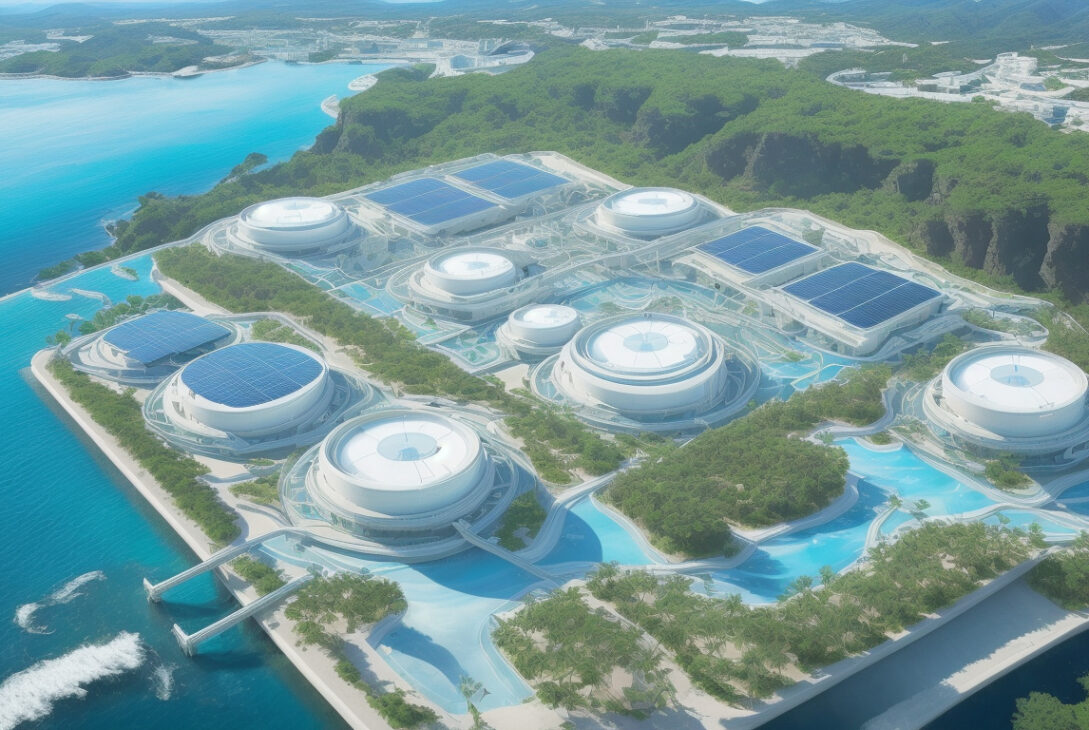Innovative Solar Desalination Technology Converts Sunlight into Fresh Water Without External Power
September 15, 2025 — A research team from Ulsan National Institute of Science and Technology (UNIST) has developed a groundbreaking solar desalination technology that efficiently produces fresh water directly from seawater using sunlight, entirely free from the need for external electricity. This advancement tackles persistent challenges such as salt accumulation, which has historically impaired the efficiency and durability of solar-powered desalination systems, offering renewed hope for water-scarce regions worldwide.
A Novel Design Tackling Salt Buildup
Led by Professor Ji-Hyun Jang of the School of Energy and Chemical Engineering, the UNIST team unveiled a unique solar evaporator featuring an inverse-L-shaped structure made of water-absorbing paper. This distinctive shape exploits capillary action, drawing seawater upward along the paper column much like litmus paper absorbs moisture. At the top of the column, the water reaches a photothermal surface designed to heat rapidly under sunlight and convert the seawater into vapor.
The key material used in this photothermal layer is La₀.₇Sr₀.₃MnO₃ (LSMO), a perovskite-based semiconductor known for its high thermal conversion efficiency. This choice enables evaporation rates between eight and ten times higher than conventional solar evaporation methods, achieving an impressive 3.40 kilograms per square meter per hour—approximately 3.4 liters under natural sunlight conditions.
Salt Rejection for Sustainable Operation
One of the major obstacles for solar desalination systems is salt accumulation on the evaporative surfaces, which decreases performance and durability over time. The inverse-L geometry ingeniously manages salt ions by driving them toward the device’s edges, where they crystallize as solid deposits that can be collected and repurposed. This built-in salt rejection mechanism prevents fouling of the photothermal surface, maintaining optimal performance without frequent maintenance.
Durability testing revealed the device’s stable operation over a two-week period even in highly concentrated saline solutions containing up to 20% salt—much higher than typical seawater salinity levels. This robustness underscores the system’s potential suitability for remote and resource-limited environments.
Implications for Global Water Scarcity
Lead author Dr. Saurav Chaule highlighted the broader significance of the technology: “The inverse-L-shaped evaporator offers a sustainable approach to freshwater production and has potential applications in eco-friendly resource recovery, such as salt harvesting.”
Professor Jang emphasized the practical benefits stating, “By integrating innovative structural design with a perovskite-based photothermal material, we have developed a cost-effective, electricity-free device capable of producing 3.4 kilograms of freshwater per hour. This breakthrough provides a practical and scalable solution to the global water scarcity crisis.”
The research, published in the journal Advanced Energy Materials, marks a considerable step forward in solar desalination technology, addressing both efficiency and longevity concerns while eliminating reliance on electrical power.
Looking Forward
This solar desalination technology could provide vital clean water in regions without stable electricity access, particularly benefiting developing countries facing severe water shortages. Its ability to efficiently evaporate seawater and manage salt buildup autonomously opens avenues for decentralized, sustainable water purification systems powered solely by sunlight.
For more information:
- Chaule, S., Jang, J.-H., et al. (2025). “Inverse-L Shaped Evaporator Based on La₁−ₓSrₓMnO₃ Perovskite with Efficient Salt Collection via Localized Salt Gradient.” Advanced Energy Materials. DOI: 10.1002/aenm.202501360
Source: Ulsan National Institute of Science and Technology; Advanced Energy Materials journal
Original article: Tech Xplore – Solar desalination technology converts sunlight into fresh water without external power










